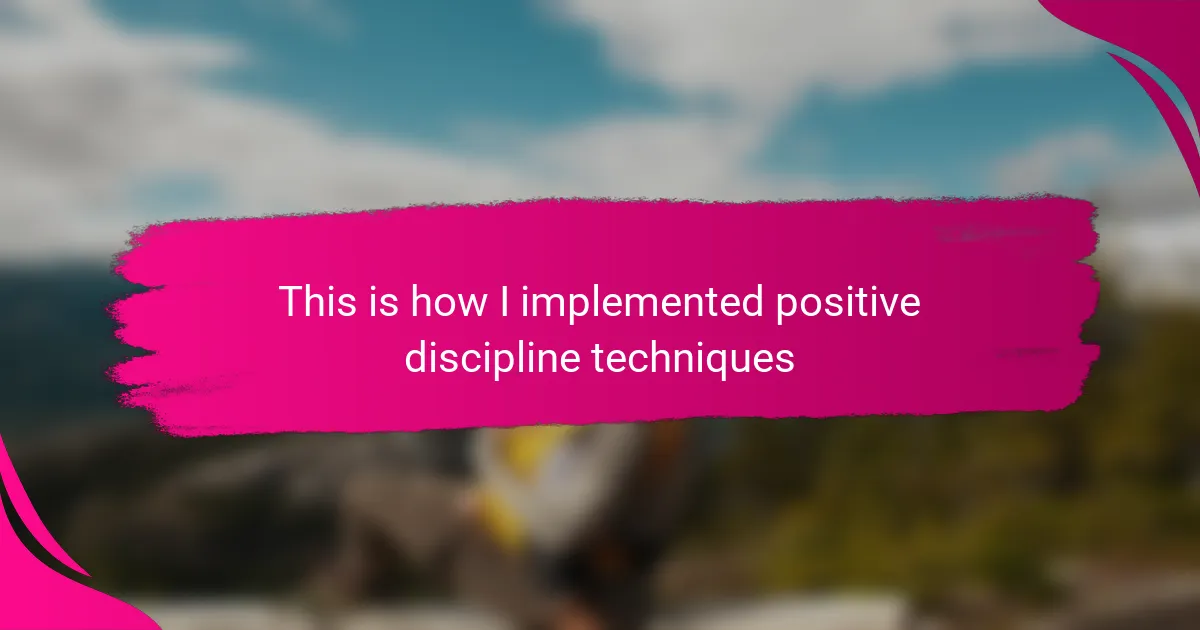Key takeaways
- Positive discipline focuses on guiding children with respect, promoting connection and trust rather than control or punishment.
- Modeling desired behaviors and maintaining consistency are key principles that foster a cooperative and safe environment for children.
- The approach improves communication and builds self-esteem, encouraging children to feel valued and understood.
- Reflecting on and preparing for challenges can help parents implement positive discipline effectively, transforming discipline into a shared journey.
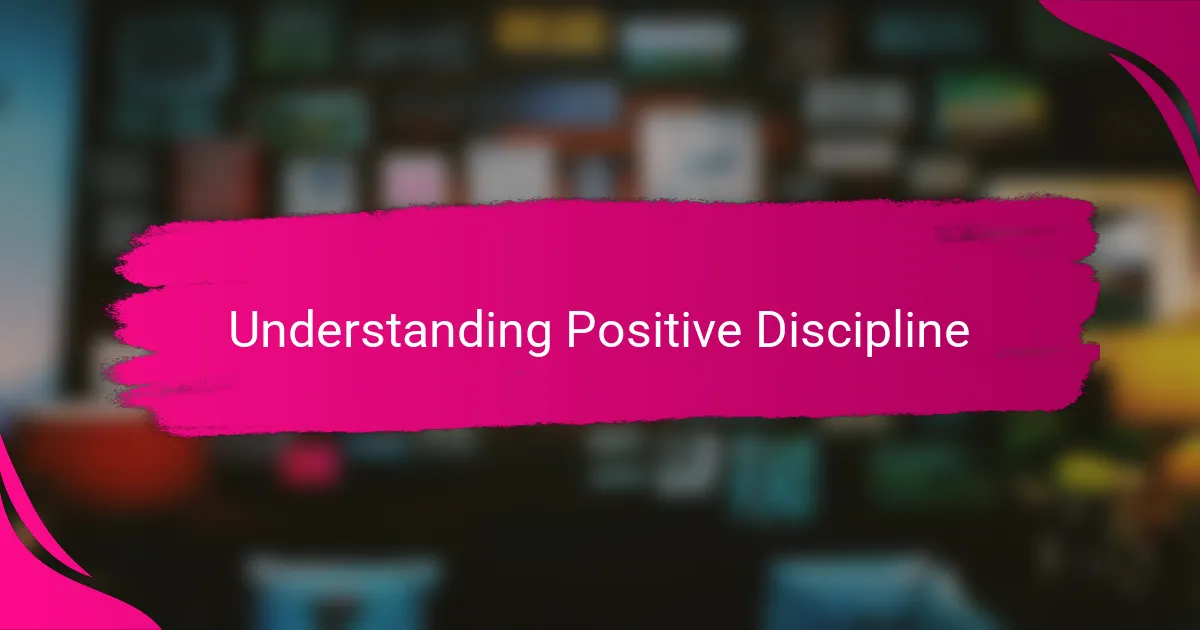
Understanding Positive Discipline
Positive discipline, to me, is all about guiding children with respect rather than control. It’s a shift from punishment to teaching, which isn’t always easy but feels much more rewarding. Have you ever noticed how children respond better when they understand why something isn’t okay, instead of just being told “no”?
I remember a time when my child threw a tantrum, and instead of reacting with frustration, I paused to acknowledge their feelings. That moment changed everything for me. It made me realize that positive discipline isn’t about perfection but about connection and patience.
What struck me most about positive discipline is how it builds trust. When children feel heard and respected, they’re more willing to cooperate. Isn’t that the foundation of any strong relationship, after all?
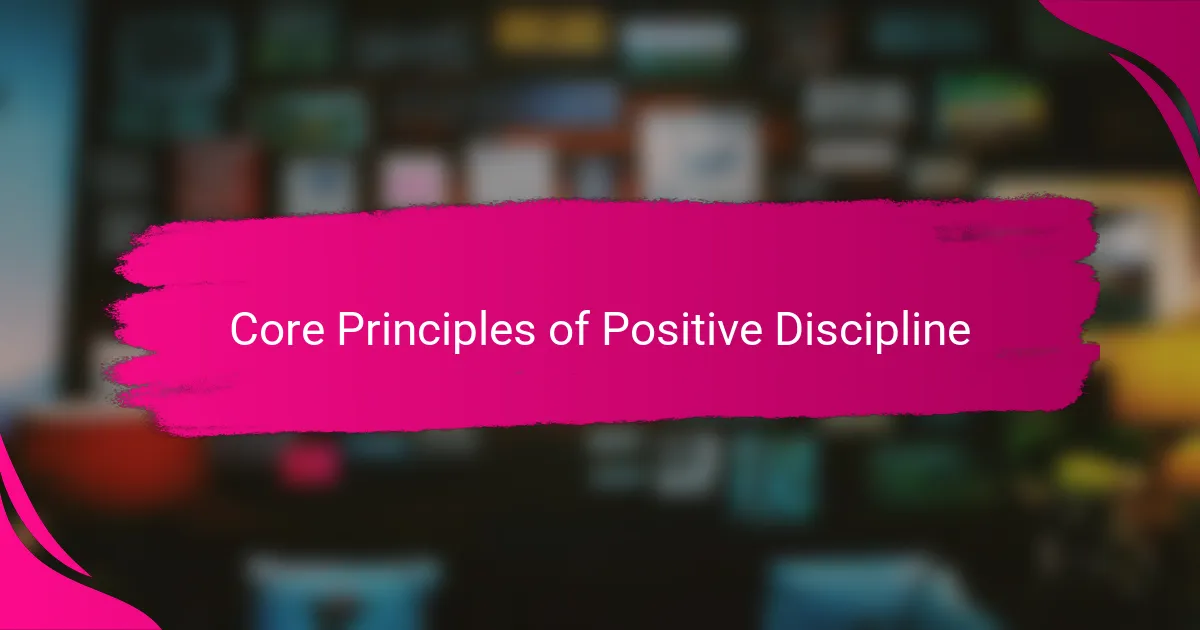
Core Principles of Positive Discipline
One core principle I’ve come to rely on is consistency. When I stick to clear, predictable responses, my child knows what to expect and feels safer. Don’t you find that knowing the boundaries helps kids, and adults too, to feel more secure?
Another key idea is focusing on solutions instead of blame. Whenever conflicts arise, I try to ask, “What can we do differently next time?” rather than fixating on what went wrong. It’s empowering for both of us and helps shift the mindset from punishment to growth.
Lastly, I’ve learned how important it is to model the behavior I want to see. If I stay calm during tough moments, my child picks up on that calmness. Have you ever noticed how your own reactions influence the atmosphere at home? That’s the gentle power of positive discipline in action.
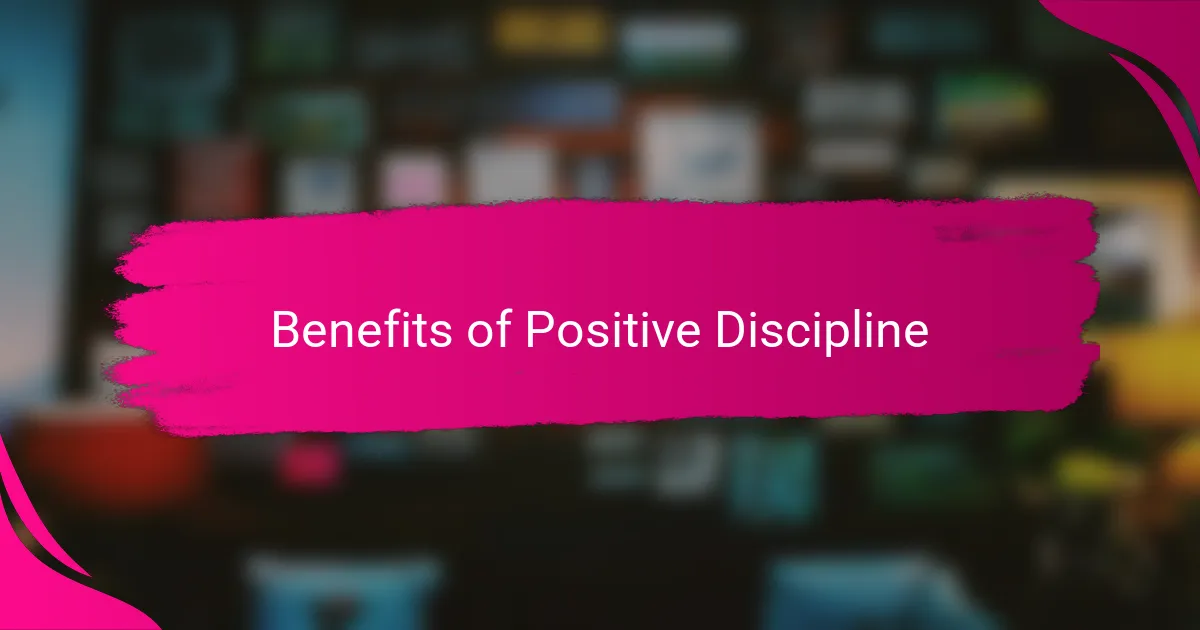
Benefits of Positive Discipline
What I appreciate most about positive discipline is how it naturally fosters a child’s self-esteem. When I praise effort and guide rather than punish, my child feels valued and capable. Isn’t it amazing how confidence can grow simply from feeling understood and supported?
Another benefit I’ve witnessed is the improvement in our communication. Instead of shouting or withdrawing, we talk things through calmly. Have you ever noticed how a peaceful conversation can prevent many conflicts before they even start?
Positive discipline also strengthens our relationship by building trust over time. When my child knows I’m on their side, even during difficult moments, they open up more willingly. Don’t you think that kind of connection is what every parent hopes to achieve?
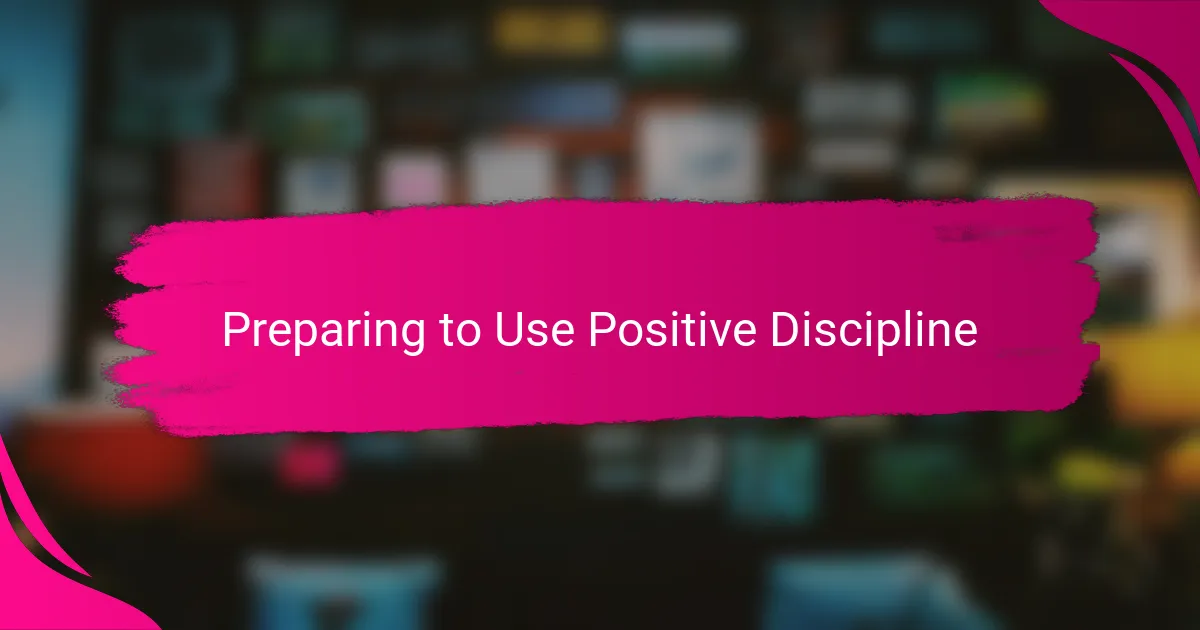
Preparing to Use Positive Discipline
Before I started using positive discipline, I realized I needed to prepare myself mentally. It meant reflecting on my own reactions and being ready to respond with patience instead of quick judgment. Have you ever caught yourself reacting before thinking? That was me, and shifting that took some conscious effort.
I also found it helpful to set clear intentions about what kind of relationship I wanted with my child. Was I aiming for control or connection? Asking myself that question made a big difference in how I approached each challenging moment. It felt like laying a foundation built on respect rather than fear.
Lastly, I prepared by gathering tools—like books, articles, and even talking to other parents who tried positive discipline. Knowing I wasn’t alone gave me confidence. Don’t you think having a support system makes tackling something new less daunting? It definitely did for me.
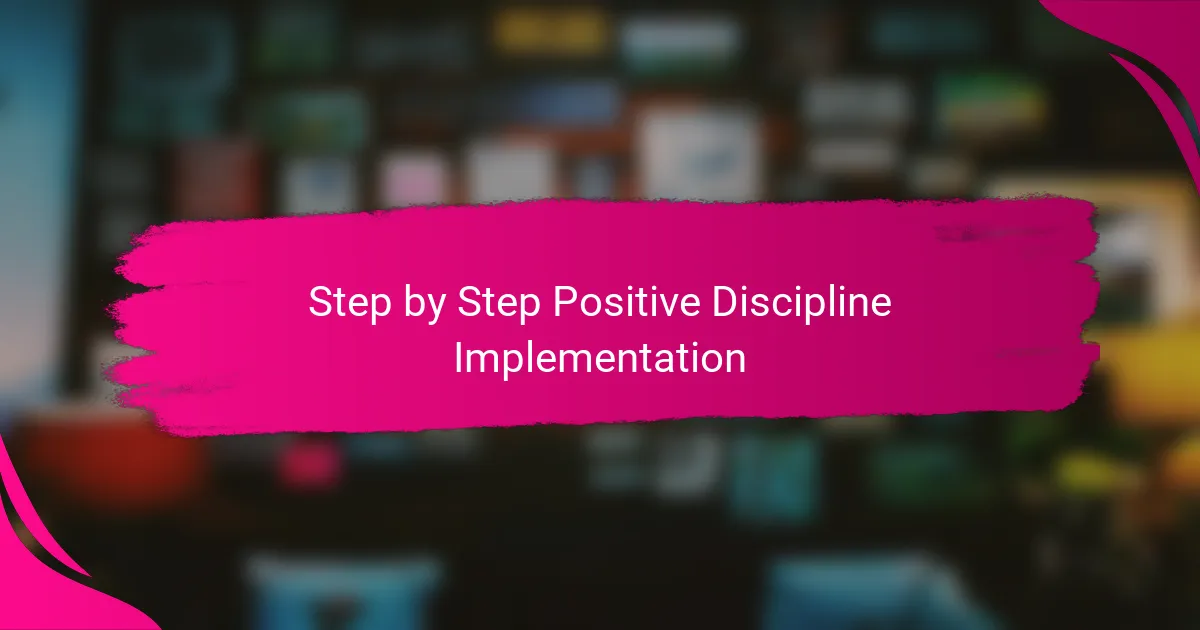
Step by Step Positive Discipline Implementation
Starting positive discipline felt like learning a new language for me. The first step was setting small, clear expectations that my child could understand. Have you ever tried explaining rules in simple terms and noticed how much easier cooperation becomes? That was a turning point in our daily routine.
Next, I focused on consistent follow-through, which wasn’t always easy. There were moments I slipped back into old habits, but reminding myself gently helped me stay on track. Isn’t it interesting how consistency builds trust, even if it takes some practice to maintain?
Finally, I made it a habit to reflect with my child after difficult moments. Asking questions like, “What can we do differently next time?” opened up honest conversations. From my experience, involving kids in the problem-solving process transforms discipline into a shared journey rather than a one-sided lecture. Doesn’t that kind of connection make all the difference?
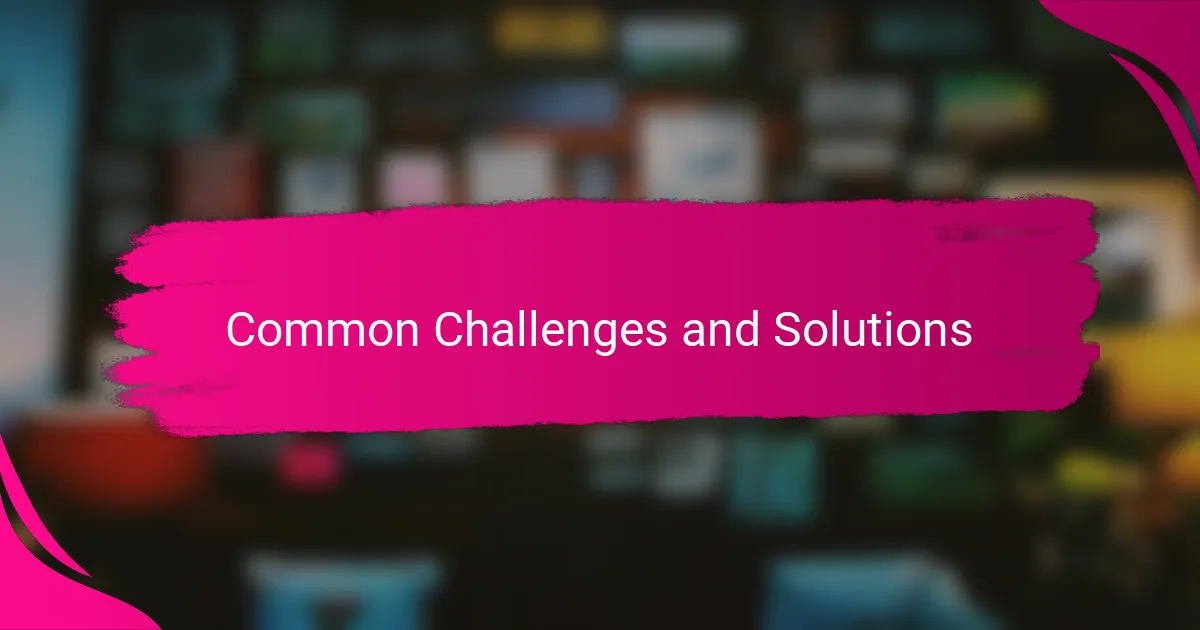
Common Challenges and Solutions
One challenge I often faced was staying patient when emotions ran high. There were times I wanted to react quickly, but I learned that taking a deep breath first made all the difference. Have you ever noticed how a calm response can defuse a situation instead of escalating it? That pause became my secret weapon.
Another common hurdle was consistency. It’s easy to slip back into old habits, especially on tiring days. I found that keeping simple reminders or notes helped me stay focused on positive discipline goals. Do you think small prompts can really change our daily parenting rhythms? In my experience, they absolutely do.
Finally, involving my child in problem-solving was sometimes met with resistance at first. They weren’t always eager to talk things through, but patiently creating space for their voice gradually opened up honest conversations. Isn’t it rewarding when children start to see discipline as teamwork instead of punishment? That shift felt like a breakthrough for both of us.
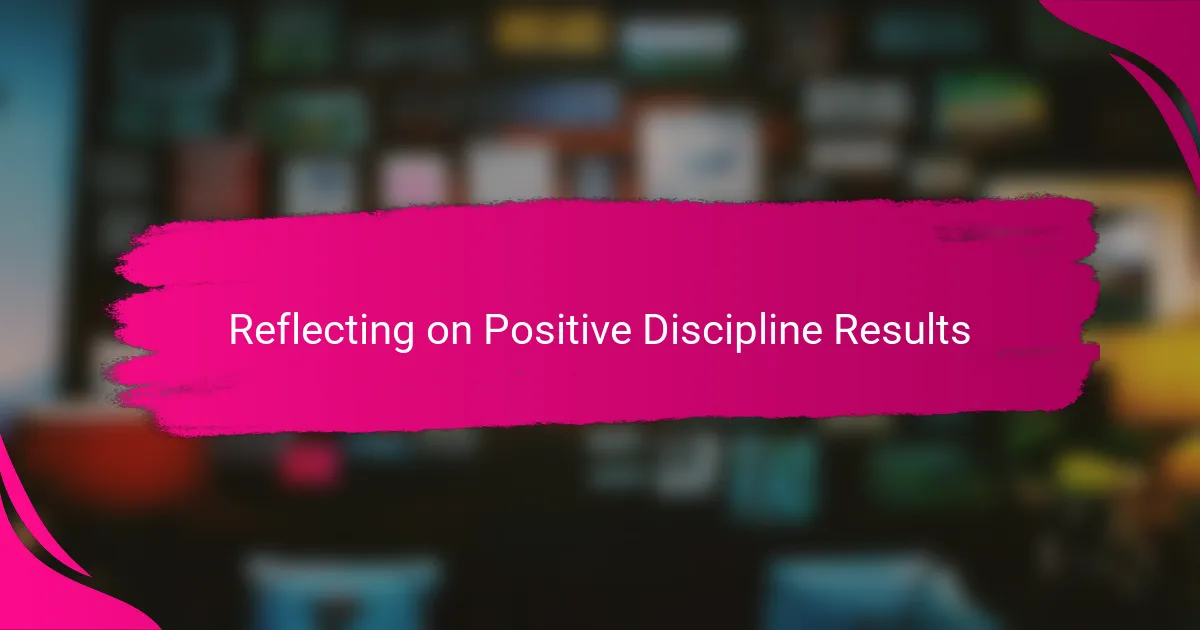
Reflecting on Positive Discipline Results
Looking back on how positive discipline has shaped our daily life, I can genuinely say the results surprised me. There were moments when patience felt tested, yet the increase in mutual respect and understanding made every effort worthwhile. Have you ever noticed how small changes in your approach can ripple into bigger shifts in your child’s behavior?
I recall one afternoon when a usual meltdown turned into a calm discussion just because I paused to listen first. That experience was eye-opening—it showed me that positive discipline isn’t about perfection but progress. Isn’t it amazing how reflecting on these moments helps us grow alongside our kids?
What struck me most is the deepened connection we’ve built over time. Seeing my child take responsibility and communicate openly feels like a quiet victory. Don’t you find that these successes, though subtle, create the strongest foundation for the future?
